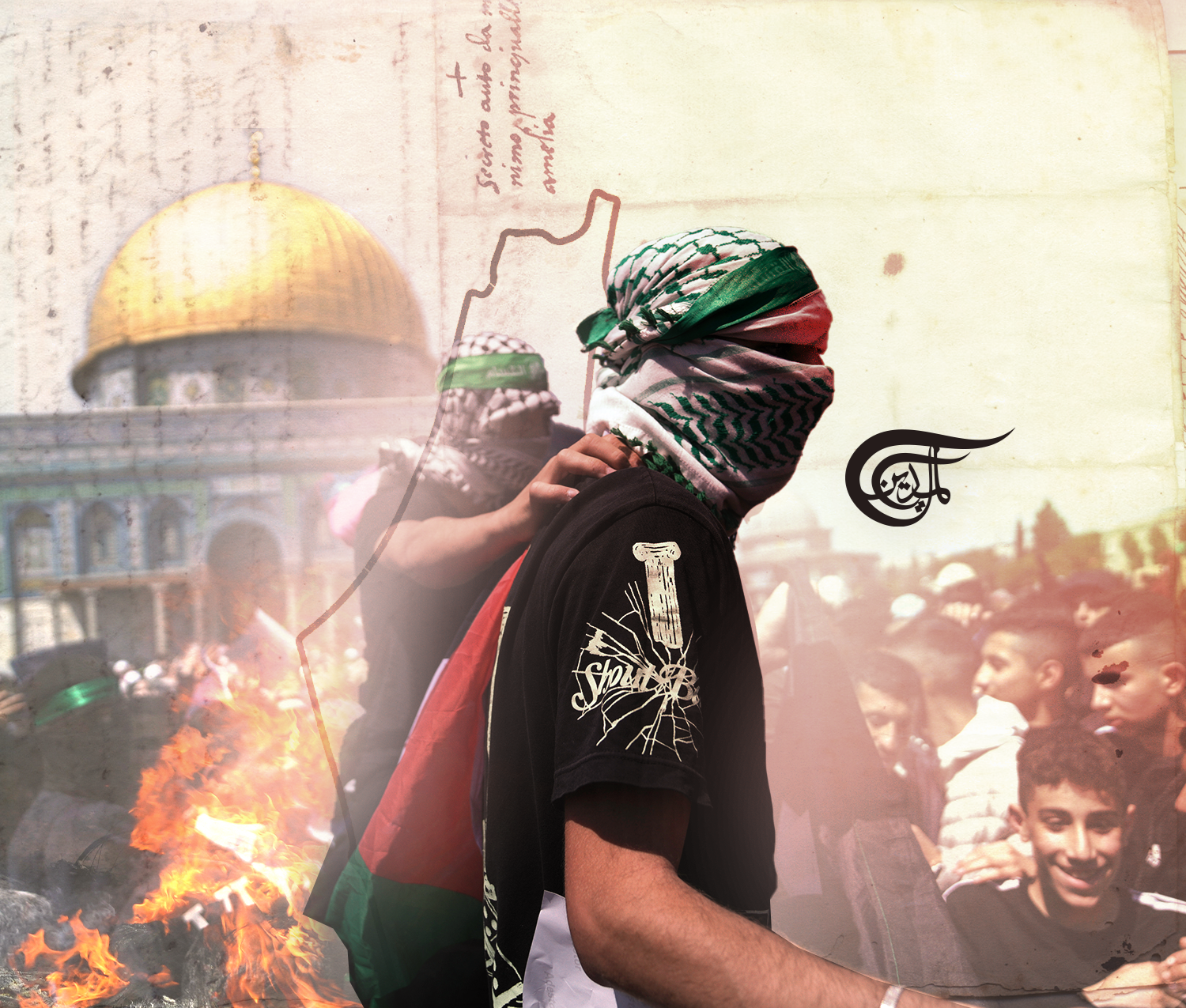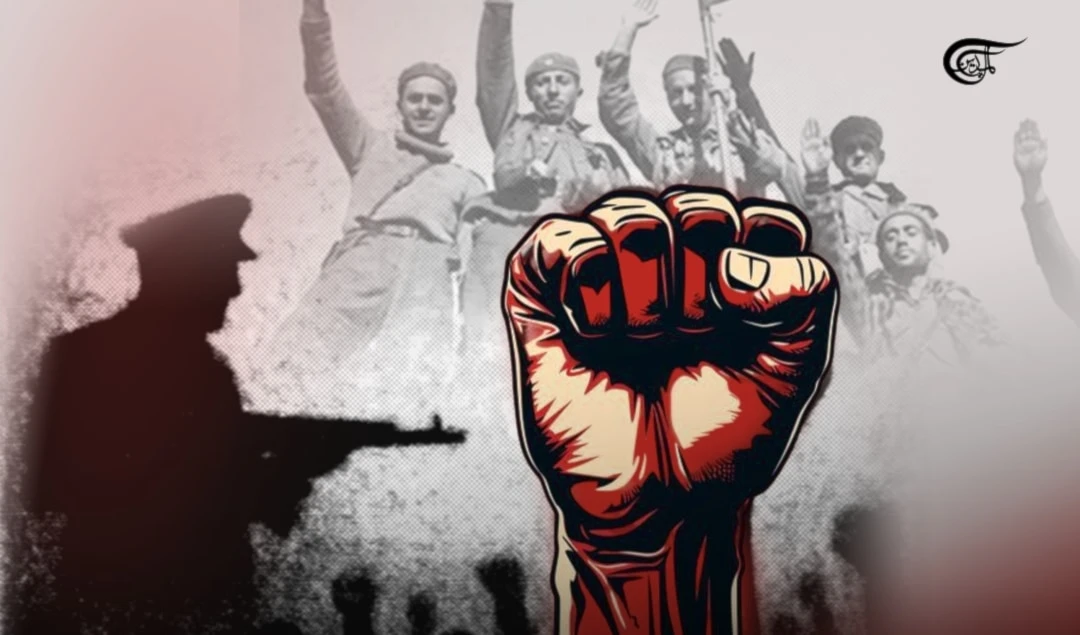The Palestinian Resistance is a refugee Resistance, this is purposely ignored
The question of refugees is a core component to the Palestinian cause for national liberation, there can be no explanation for the armed resistance without understanding this key element.
-

Without understanding the Nakba of 1947-9 and that the majority of the Palestinian people are refugees, today’s armed resistance groups make no sense
After rocket-fire from Lebanon, in response to Israeli assaults on worshippers at Al-Aqsa Mosque, reports began to emerge about “militants” that had opened fire on “Israel”. This reporting came as Palestinian groups were blamed for the rocket fire, which no group has yet claimed. What is important here however, is how the Palestinian resistance has been framed, to label them as “militants” attacking a foreign country, robbing the resistance of its foundational context.
To understand the Palestinian resistance, we have to understand who is fighting and what they are fighting for. Although this may seem self-evident to those who understand the nature of the Palestinian struggle for national liberation, the Nakba of 1947-9 is the key piece of context which makes sense of the ongoing struggle. Without understanding that the majority of the Palestinian people are refugees, today’s armed groups make no sense. Leaving this out, especially for a Western audience, therefore opens the way for framing the Palestinian resistance movements as foreign terrorist groups and that is the very reason why this context is never mentioned.
Inside Palestine today, the accepted base for armed struggle against the occupying entity is the Gaza Strip. Gaza, which is home to dozens of armed groups and movements, is populated by roughly 2.2 million people, around 80% of which are refugees. Even in the West Bank, the newly formed armed resistance groups are more common to emerge inside refugee camps, most prominently Jenin refugee camp, but also in the likes of Balata camp near Nablus and Aqabat Jabr camp in Ariha (Jericho). When the groups in Gaza open fire, with rockets and mortars, into what is today described as “Israel”, what they are actually bombarding are areas where their grandparents once lived. Without the various walls and fences, dividing the Gaza Strip from the rest of historic Palestine, these refugees would be able to walk to the villages they are firing into, some within 20 minutes or less.
As for the Palestinian resistance groups that are present inside Lebanon, like Hamas, Islamic Jihad, and the PFLP, these groups are entirely composed of refugees. Media reports emerged last week stating that the area known as “Shlomi” was amongst the first areas where sirens sounded in the Western Galilee. “Shlomi” is an Israeli settlement that was founded in 1950, it was built on the ruins of the ethnically cleansed Palestinian village of al-Bassa, that was depopulated in May of 1948. The people of al-Bassa still reside in refugee camps inside Lebanon today.
If the rocket fire was carried out by Palestinians, this would literally mean that refugees fired rockets into their own villages and lands. Under UN resolution 194, Palestinian refugees have the legal right to return to their homes, yet the Zionist entity prevents this and has now re-written the names of the towns and villages where those refugees call home.
This is all important to note, because the current framing of the Palestinian resistance, in Lebanon, suggests that these are foreigners who are attacking. These are not foreigners, these are refugees that are fighting an entity that has stolen their homes and the refugees would have no reason to fight if they were not stateless that are forced to live in overcrowded refugee camps for 75 years.
Historically speaking, the Palestinian resistance since 1948, has always been spearheaded by refugees. We can look at the 1950’s when the Palestinian resistance began to emerge from inside Egypt, the 1960’s when the resistance set up its base in Jordan, or the 1970’s and early 1980’s in Lebanon, where the Palestine Liberation Organisation (PLO) based itself after its expulsion from Amman. All throughout the history of the Palestinian struggle for national liberation, the surrounding Arab nations have been center-stage to the armed resistance against "Israel".
In September of 1948, the All Palestine Government was set up to govern from Gaza, which was then under Egyptian control, and was led by Hajj Amin al-Husseini, the former Grand Mufti of Jerusalem who had been exiled. After this, all the prominent Palestinian organizations we know today were set up outside Palestine and by members of the diaspora. George Habash, who founded the Arab Nationalist Movement (ANM) in 1951 and then the Popular Front for the Liberation of Palestine (PFLP) in 1967, was expelled with his family from their hometown of Lyd, for example. As for prominent figures like Ahmed Shuqayri, who founded the PLO, or Yasser Arafat, the prominent Fatah party founder and leader, were both members of the Palestinian diaspora. Fathi Shiqaqi, the founder of the Palestinian Islamic Jihad (PIJ) movement, was born in a refugee camp in the Gaza Strip, but his family was originally from Zarnuqa village. The founding father of Hamas, Ahmed Yassin, was born in al-Jura village and was ethnically cleansed, along with his family, into the Gaza Strip.
The question of refugees is a core component to the Palestinian cause for national liberation, there can be no explanation for the armed resistance without understanding this key element. Most of the leaders, the commanders, the activists, and participants on every level of the armed struggle, are refugees. If this core context is robbed of the Palestinians, then it becomes much easier to spread lies about the resistance forces and to reduce them to “foreign militants attacking Israel”.

 Robert Inlakesh
Robert Inlakesh
 5 Min Read
5 Min Read











